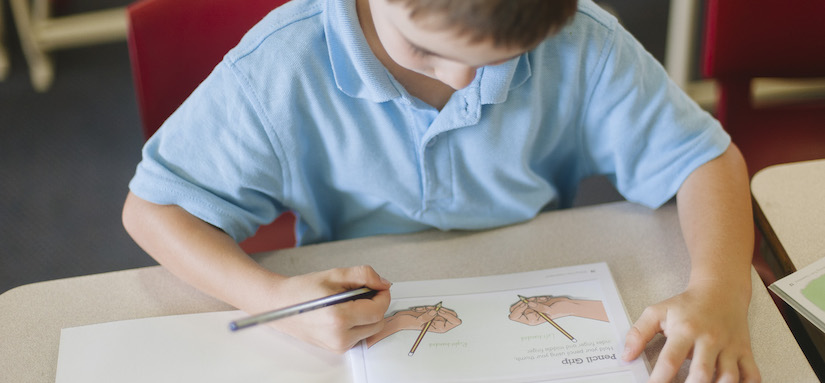Articles & Videos
Three common issues with students’ handwriting
Categories
Subscribe to our newsletters
Receive teaching resources and tips, exclusive special offers, useful product information and more!
Three common issues with students’ handwriting
Writing Time 7/12/24

As a teacher, you’ve no doubt seen some interesting handwriting from students. This could be writing that trails down the page, sentences written as one long word, or perhaps letters with so much slant they look like they’re about to fall over. Here are three things you might see in your students’ handwriting that may affect legibility.
Straying from the path
Early years students frequently stray off the lines when writing sentences. Poor fine motor control may be the cause, as students sometimes lack the dexterity and hand–eye coordination needed to stay on the lines.
Practice makes progress, so provide your students with extra practice if their sentences tend to stray. Print a Blank Archie Lines worksheet from Foundation, Year 1 or Year 2 at Writing Time Online and give students a short sentence or paragraph to copy. Encourage students to use Archie the Owl as an extra point of reference to ensure they are putting letters in the correct head, body and tail positions, particularly when moving between two different letter types (e.g. g to h) that call for students to move quickly from a tail to a head position, or vice versa.
Inconsistent spacing
Beginner writers first learn to distinguish how much space to leave between letters, and then between words. It’s easy for early years students to misjudge that extra space required between words, causing one word to flow into the next.
The space students should leave between each word is typically the width of their index finger. Have students place the index finger of their non-writing hand after each word to remind them how much space to leave before the next word.
Keep in mind, the finger-space strategy doesn’t work well for left-handed students as their right hand gets in the way when they go to write the next word (right-handers, try it yourself and see). Provide your left-handed students with an object, such as a paddle pop stick, to use as a spacing guide. Have students move the stick along just above their writing as a guide of how much space to leave between two words.
Whenever you’re modelling handwriting, it’s a good idea to slightly exaggerate the spacing between your words to ensure these spaces are obvious to students. During the modelling process, be sure to ‘think aloud’ to emphasise when you decide to leave a space and why it’s important to leave spaces between words.
Sloppy slope
Another issue you might see in your students’ handwriting is overly slanted writing. The simplest way to correct this issue is to adjust the paper position. Have your left-handed students rotate their paper clockwise and your right-handed students rotate their paper anti-clockwise. If your students still need extra support, print a Slope Card from Writing Time Online. Advise students to position the Slope Card behind their paper as a guide.
Writing Time Online is home to a treasure-trove of printable and digital handwriting resources that perfectly complement the Writing Time Student Practice Books. Best of all – it’s free! Sign up today at Writing Time Online.